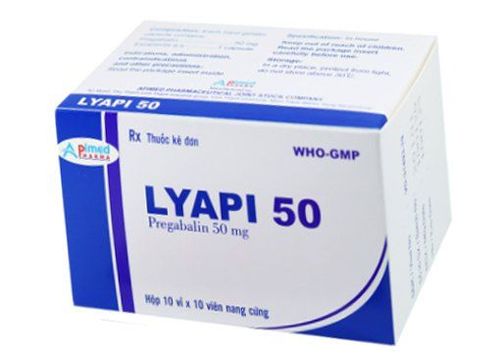This is an automatically translated article.
Kusapin is a psychotropic drug whose main ingredient is Oxcarbazepine. The drug is indicated for the first time in monotherapy or in combination in partial seizures, primary generalized epilepsy. To better understand Kusapin drug information, please read and follow the information in the article below.1. What is Kusapin?
The main ingredient in Kusapin is Oxcarbazepine 300mg. Oxcarbazepine, through the mechanism of blocking sodium channels, stabilizes the membranes of hyperexcited neurons, inhibits electrical discharge, and reduces synaptic impulse transmission, thereby preventing the spread of seizures. on clinical. Oxcarbazepine is also involved in potassium channel activation and calcium channel modulation.2. Indications and contraindications of the drug Kusapin
Kusapin is indicated for the first time in the treatment of:
Stop partial seizures (simple partial, complex partial seizures, secondary generalized partial seizures) Primary generalized epileptic tonic-clonic seizures vibrate. Patients with hypersensitivity or allergy to any of the ingredients contained in Kusapin.
3. Dosage and how to use Kusapin
3.1. How to use The drug is prepared in the form of an oral medication. Patients can drink before, during and after eating because food does not affect the absorption of the drug. Avoid using with alcohol, stimulants, fermentation.
3.2. Dosage Adults: Oxcarbazepine should be started at a low dose and achieved efficacy, at about 600 mg/day, in 2 divided doses. Consider increasing the dose by a maximum amount of 600 mg/day at increments of weeks until clinical effect is achieved. The daily effective dose of the drug is in the range of 600 - 2400 mg. Children: The starting dose when taking orally is 8-10 mg/kg/day, divided into 2 times; The dose may be increased by 10 mg/kg/day at weekly intervals, the dose not exceeding 46 mg/kg/day. No dose adjustment is required for patients with mild and moderate hepatic impairment. For patients with renal impairment with creatinine clearance less than 30 ml/min, the drug should be initiated at half the usual dose (300 mg/day) and gradually increased to achieve a clinically effective response. Oxcarbazepine has not been clinically studied in children under 2 years of age and in patients with severe renal impairment.
4. Undesirable effects of the drug Kusapin
Undesirable effects of the drug during use are usually mild and transient, mainly encountered at the beginning of drug use.
Common:
Whole body: fatigue, weakness. Central nervous system: dizziness, headache and somnolence, restlessness, forgetfulness, lethargy, ataxia, inattention, confusion, depression, personality changes, nystagmus, tremor. Digestive system: nausea, vomiting, constipation, abdominal pain, diarrhea. Metabolic disorders: hyponatremia. Dermatology: acne, baldness, rash. Senses: double vision, dizziness, abnormal vision (blurred vision...) Rare and uncommon:
Whole body: angioedema, fever. Skin: rash, urticaria, Stevens-Johnson syndrome, systemic lupus erythematosus Cardiovascular: arrhythmia Hematology: decreased white blood cell count, thrombocytopenia Liver: increased liver enzymes, hepatitis. Metabolic: hyponatremia accompanied by signs and symptoms of seizures. Usually these side effects go away when the patient stops taking the drug. If during the course of taking the drug, the patient experiences any unwanted side effects, they should stop taking the drug, contact the doctor immediately for advice, timely treatment.
5. Notes when using Kusapin
Notes when taking Kusapin include:
When you have a prescription, you need to tell your doctor all the medicines you are taking, because some drugs can interact with Oxcarbazepine contained in the drug, such as: : phenobarbital, phenytoin, dihydropyridine calcium antagonists, some oral contraceptives. Use caution when using the drug for the elderly, children under 15 years of age, people with liver failure, kidney failure, myasthenia gravis, peptic ulcer disease. The drug should not be used in the case of pregnant women because the drug can cause miscarriage, teratogenicity, and birth defects. The use of the drug should not or be limited during lactation because the drug is excreted in breast milk and passed on to the baby, the benefit should be weighed against the risk. When using the drug, the patient should not drive or operate machinery because the drug can cause dizziness and drowsiness. Kusapin is a drug used in the treatment of epilepsy and anticonvulsants. However, to ensure the correct and effective use of the drug, and to avoid unwanted effects, the drug should be prescribed and used as prescribed by the doctor. If you have any further questions about the drug, please consult your doctor/pharmacist for advice.
Please dial HOTLINE for more information or register for an appointment HERE. Download MyVinmec app to make appointments faster and to manage your bookings easily.













